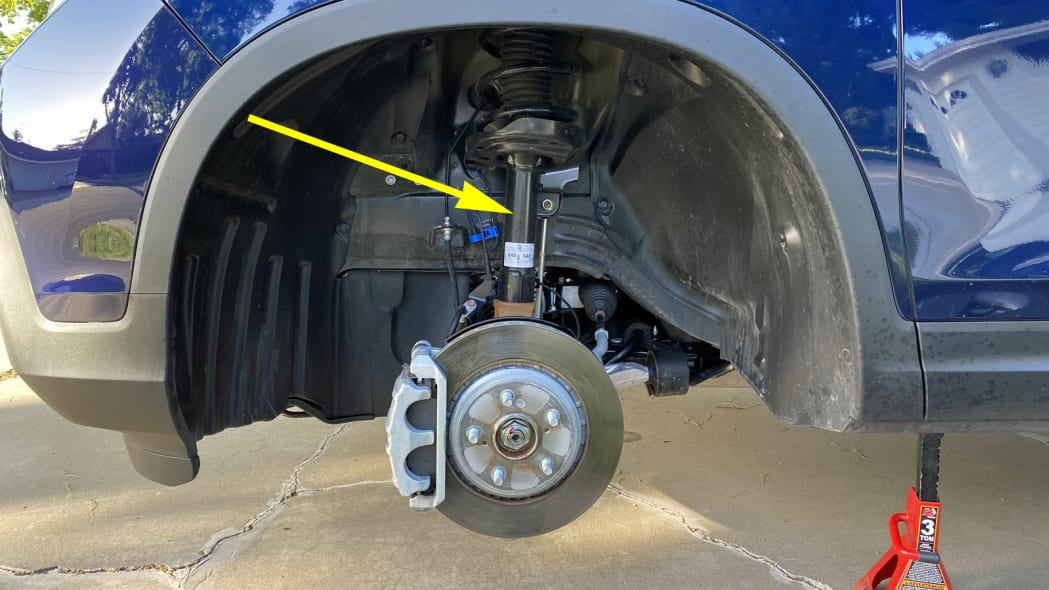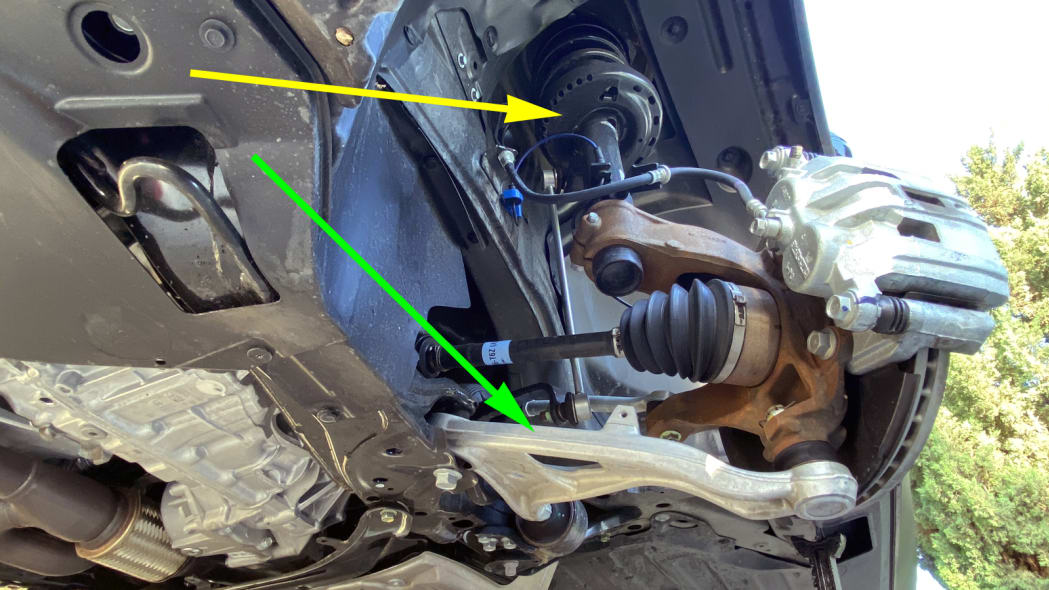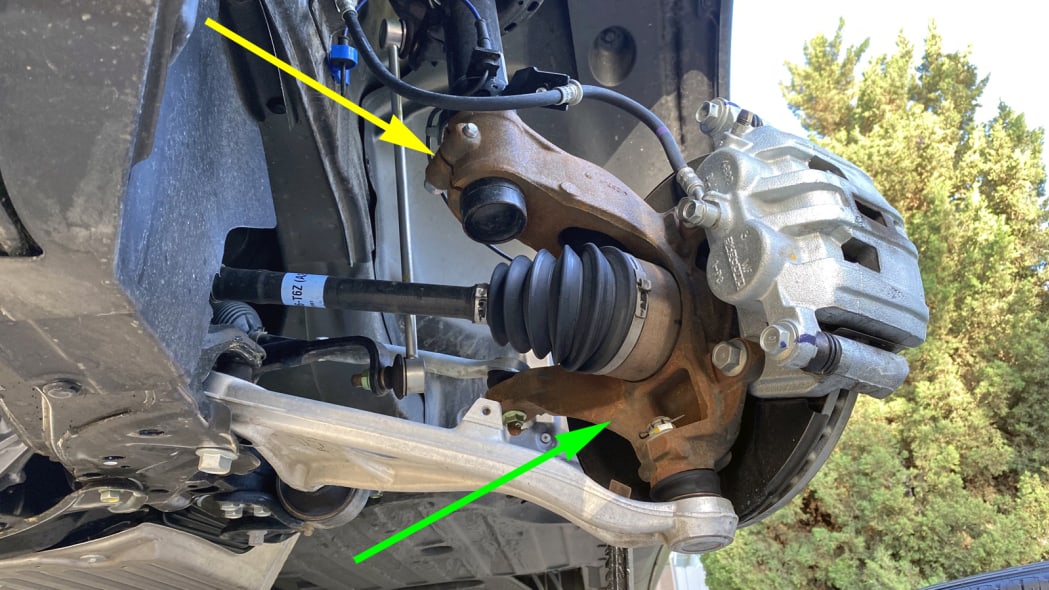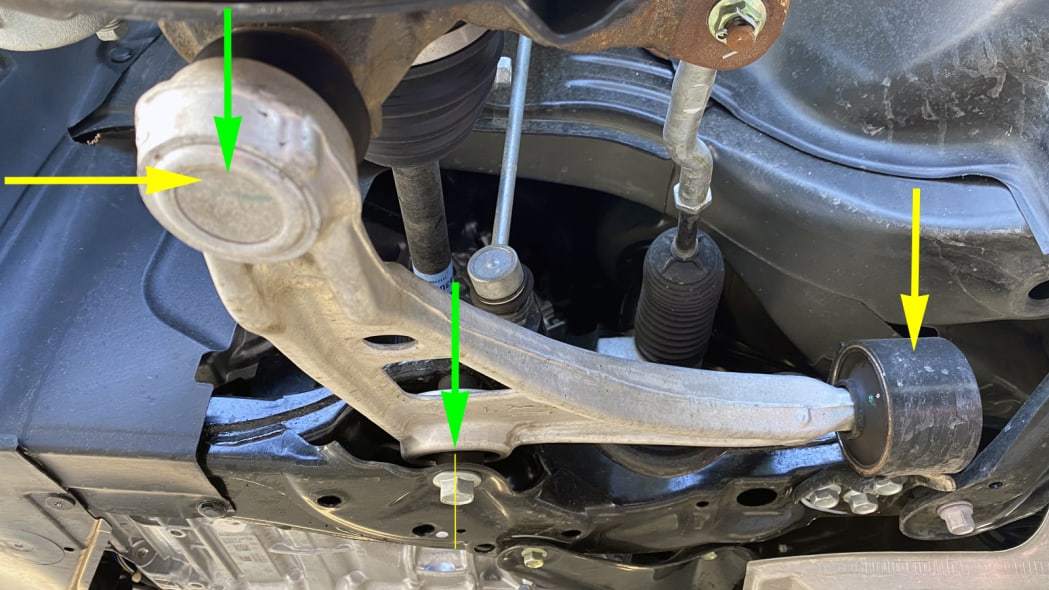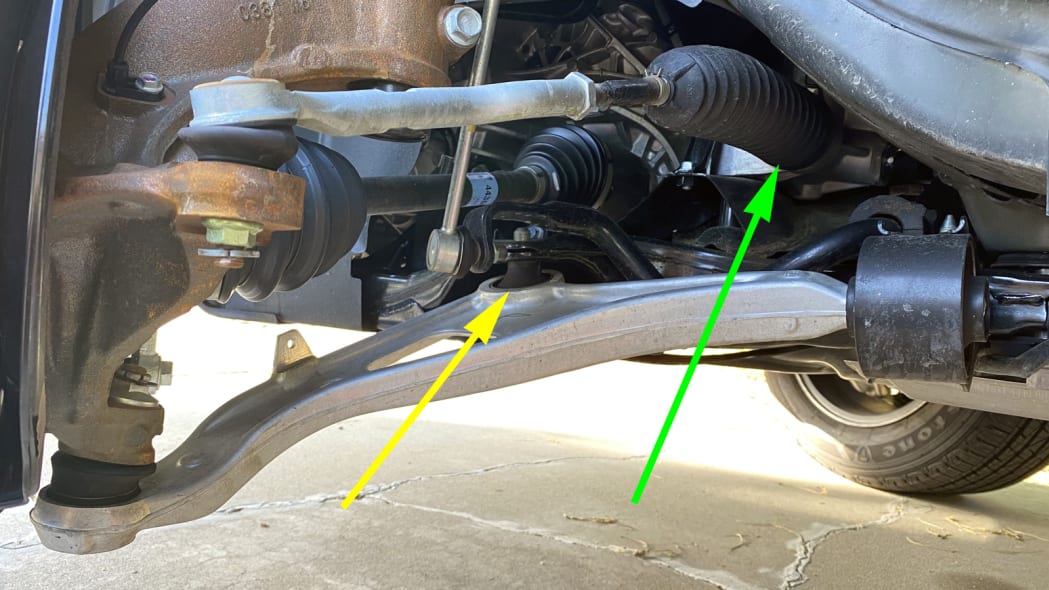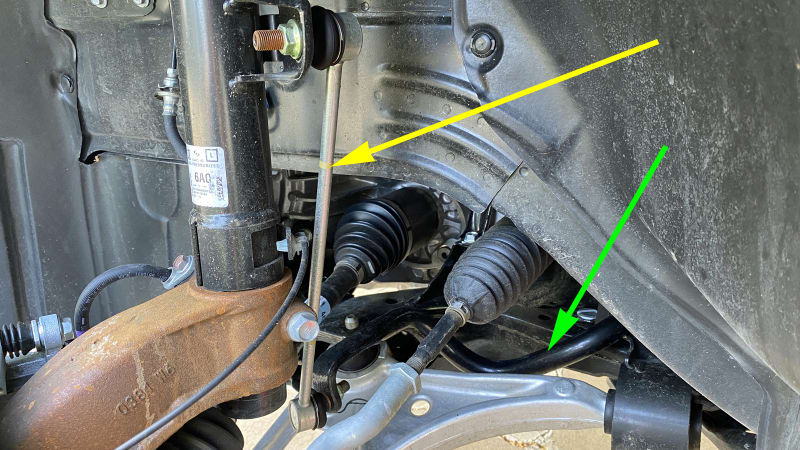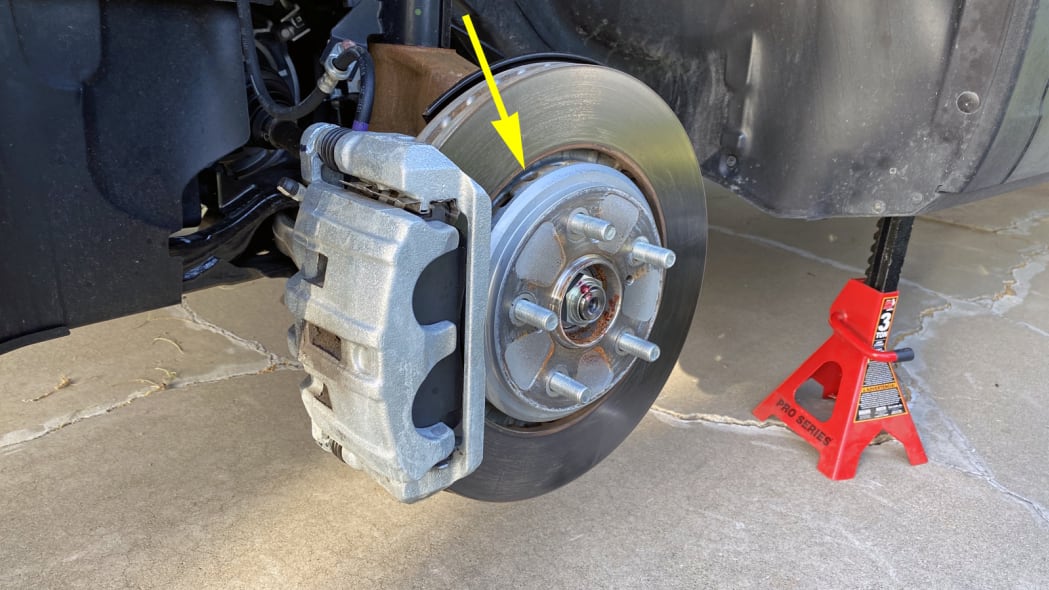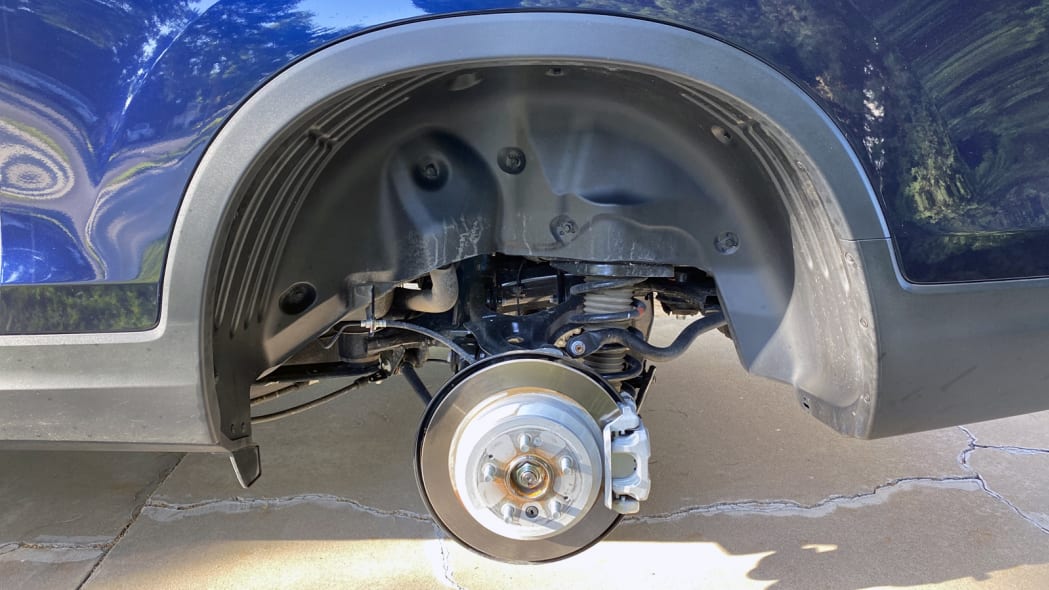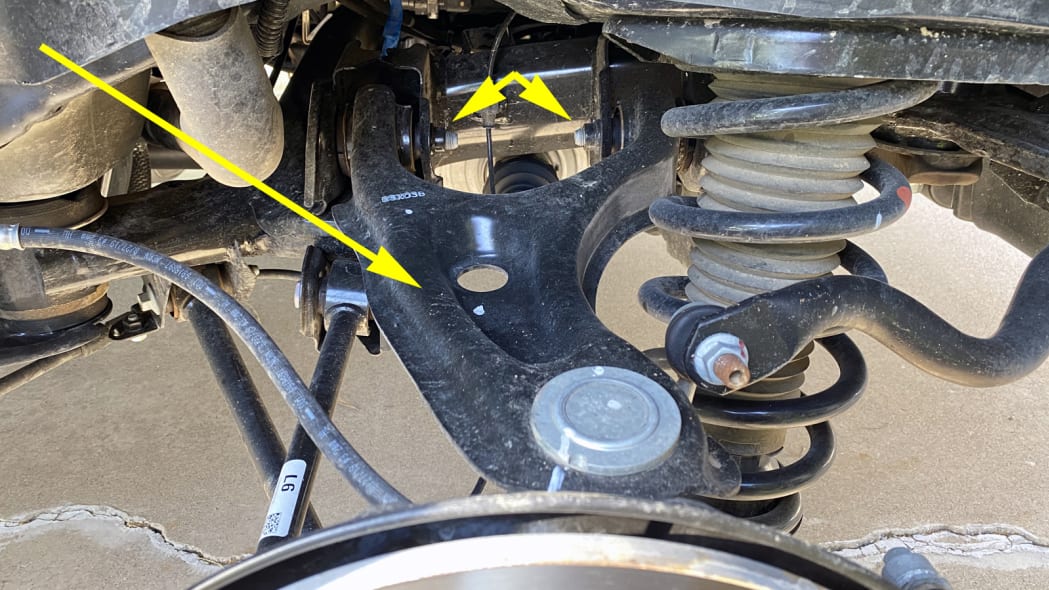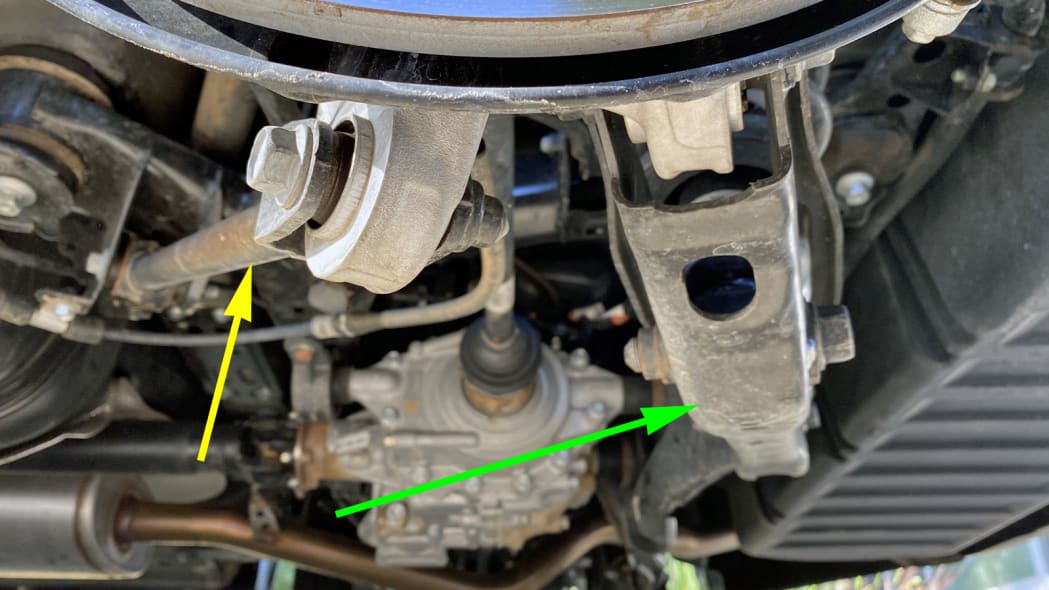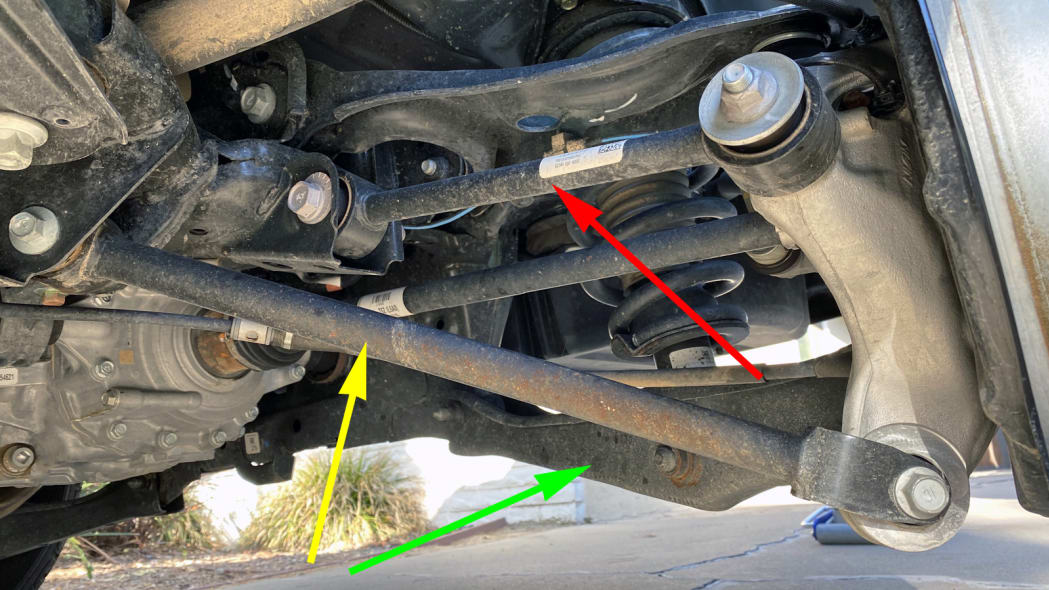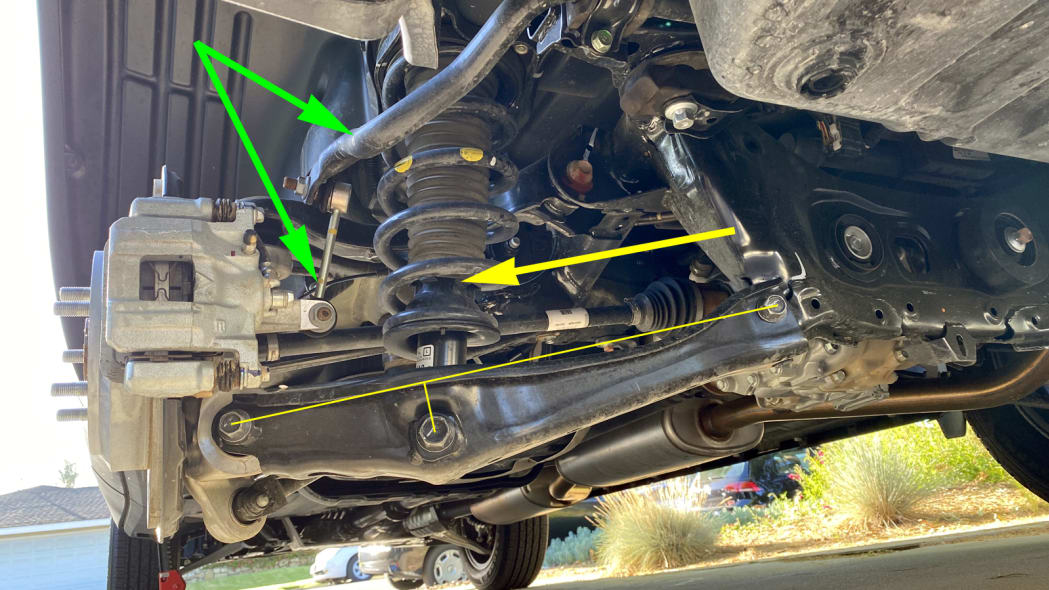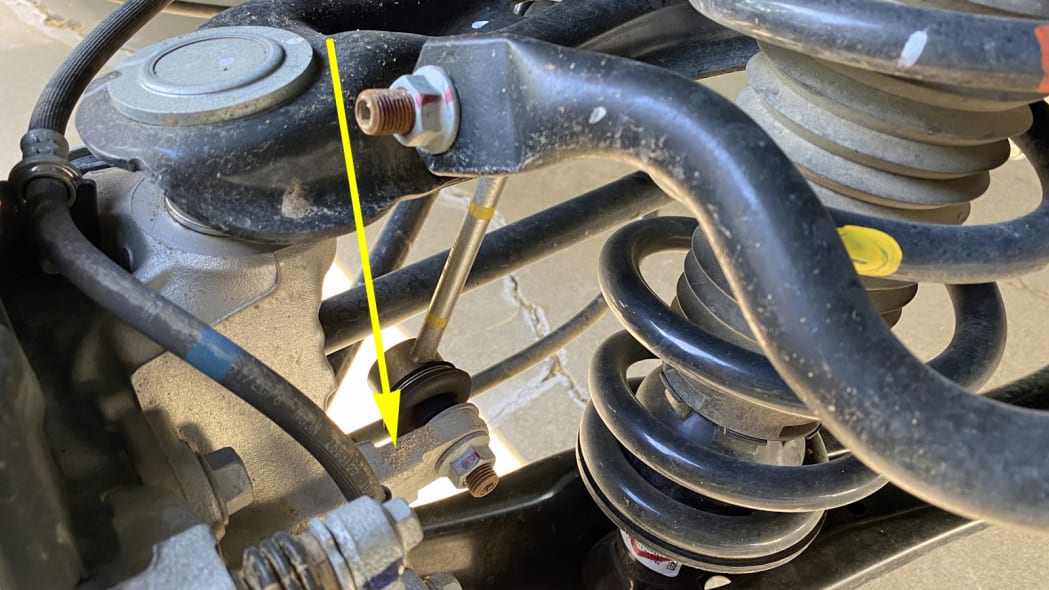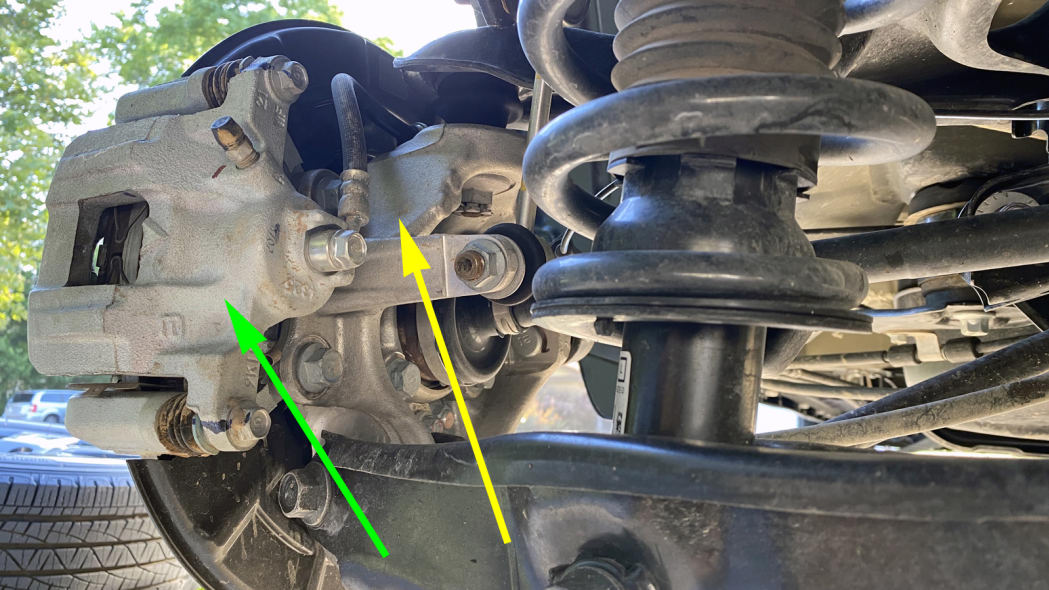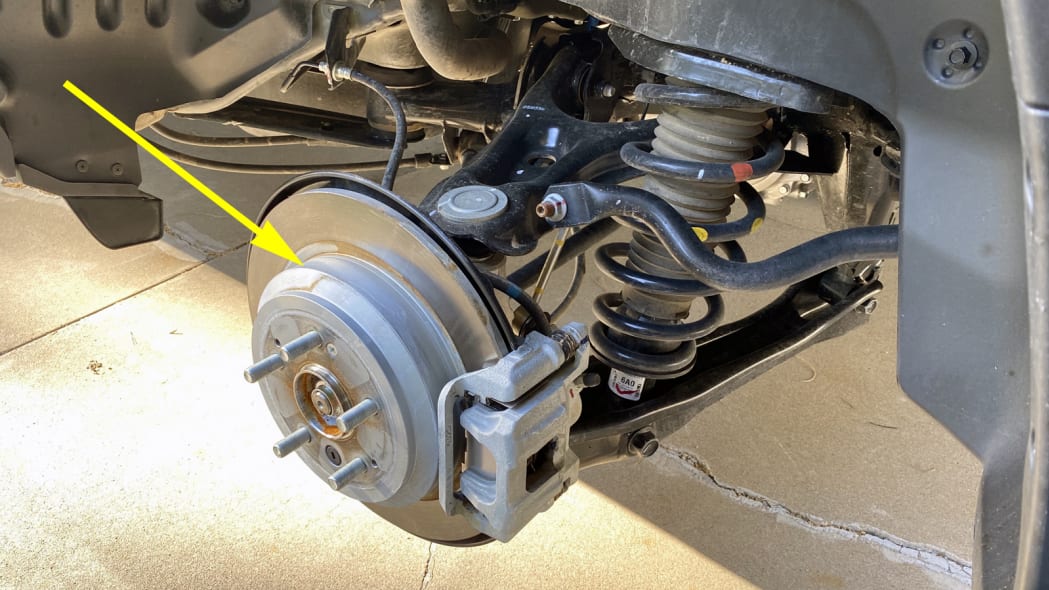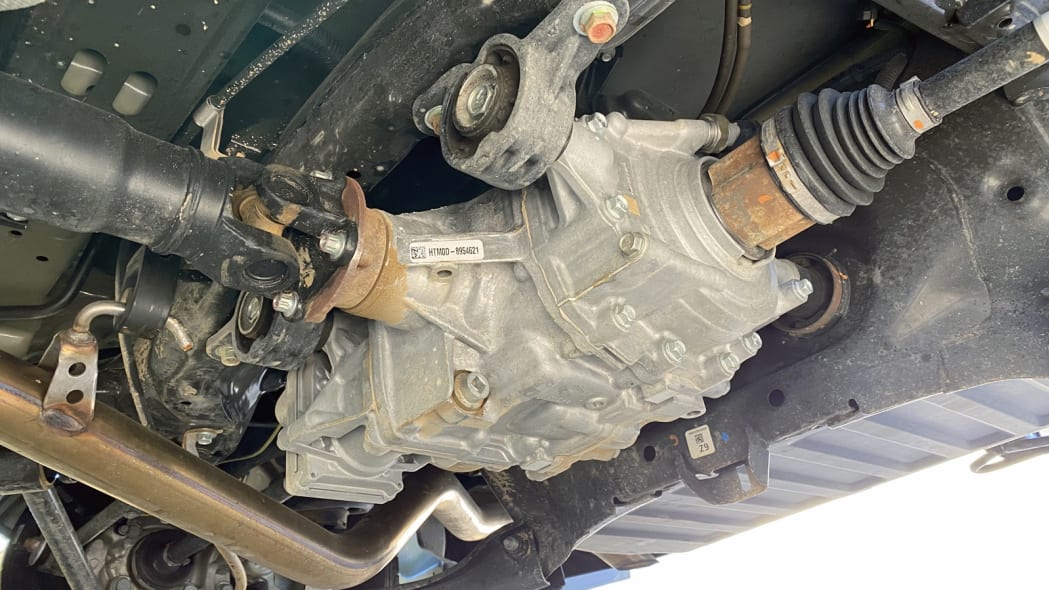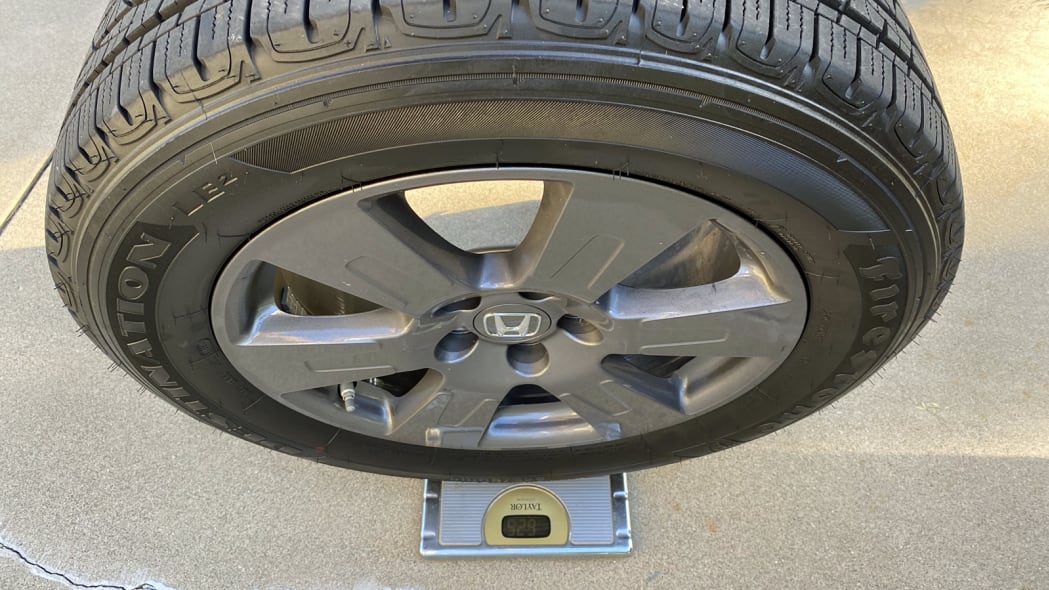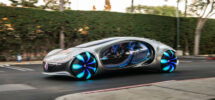Many have their doubts about the Honda Ridgeline’s unibody structure and independent rear suspension. Not me. I once drove the latest Ridgeline generation to Racetrack Playa, a geological wonder you may have read about in Death Valley. The trip there was a tooth-rattling 54-mile out and back journey on a badly washboarded dirt road, but thanks to its carlike unibody structure and independent rear suspension doing a better job sucking up the washboard at speed, the Ridgeline survived the trip much better than two off-road package trucks that tagged along. It may have returned with one slightly leaky rear shock, but the Tacoma TRD Off-Road and Nissan Titan XD Pro-4X suffered dramatic explosive failures of their rear shocks and irreversible heat damage to their front ones.
The Ridgeline’s suspension has no equal in the pickup world when it comes to on-road ride and handling, and unlike the weird first generation’s compromised bed, the new one’s is longer and wider than any other midsize crew cab. It’s got that trunk and two-way tailgate, too. By all accounts it’s a great truck if you can admit you’ll never take it to Moab. But Death Valley surprised me. Much like that original generation, the 2020 Honda Ridgeline is actually quite well-suited to some off-highway situations. Let’s see if we can figure out why.
Right away we see something different. The Ridgeline uses MacPherson strut (yellow arrow) front suspension. Struts are strong, but their presence here does confirm that extreme articulation isn’t in the cards. Also, the front air dam ahead of the wheel opening doesn’t offer a very impressive approach angle. Neither of these are limitations on dirt roads in reasonable condition. But, yeah, it’s also true that the idea of the Ridgeline on the Rubicon trail is laughable.
The second-generation Ridgeline’s front struts (yellow) contain a hidden feature that was NOT present in the first-generation truck. It’s called Amplitude Reactive Damping, and what that means is the struts contain two damping valves instead of one. These shocks use one of the valves to generate less damping force and produce a more compliant ride when wheel motions are small on broken asphalt, gravel roads and washboard surfaces. The other valve comes into play to create more damping force when wheel motions become more exaggerated, as they would be as the body heels over during hard cornering.
The lower end of the suspension is positioned by a forged-aluminum control arm (green), a stronger piece that replaces a heavier steel unit that was present on the first-generation truck.
The steering knuckle (green) is cast steel piece that is stronger than the one used on the original Ridgeline. That’s a theme that also applies to the hubs, wheel bearings, ball joints and other pieces. The second-generation Ridgeline is simply a beefier truck than its predecessor.
This knuckle employs a pinch-style strut mounting point, which means the lower end of the strut itself should include a thin bracket that fits into the slot (yellow) to ensure proper alignment of the two parts.
This is an L-shaped control arm that points toward the rear, so the usual load path rules apply. Vertical road shocks go straight up into the spring and damper assemblies, which we know as shock absorbers.
But the most abrupt and severe bumps also have a longitudinal component called harshness, which comes in from the road through the tire and hub to the ball joint (yellow), which causes the L-shaped arm to pivot about its forward bushing and convert that pulse into an inward load at the rear bushing — which is intentionally large to do that job effectively.
As for cornering loads (green) they come in through the ball joint laterally and pass straight on through the arm to its forward chassis mounting point.
The lower control arm’s forward mounting point (yellow) is securely bolted with a vertically oriented bolt, which makes it easy to visualize how it might act as a pivot during harsh impacts. The rear bushing (green) is odd in a different way. There’s no bolt. The lower control arm terminates in a shaft that simply plugs into it. I have to imagine the two are keyed in some way — not a perfectly round shaft and a round hole — so they move together as the arm pivots up and down, but I couldn’t determine that for certain.
This angle shows that the lower control arm’s upper bushing almost certainly has a pillow ball — a kind of ball-and-socket joint — hidden within the rubber. Meanwhile, the Ridgeline’s transverse-mounted engine and transmission make it necessary to mount the steering rack (green) behind the drive axle.
Like many modern strut-based suspensions, the Ridgeline’s stabilizer bar link (yellow) is mounted directly to the strut itself, a move that produces a 1-to-1 stabilizer bar motion efficiency ratio. The stabilizer bar itself (green) is mounted low against the subframe and behind the steering rack.
Rear mounted steering leads to front-mounted brakes, and these are based upon good-sized two-piston sliding calipers. The rotors are vented, of course, but there are other vents (yellow) that are closer to the hub and wheel bearing areas.
The rear of the Ridgeline takes things a step further than the Ram 1500 we looked at last week. We can see the coil spring from here, but we can also see evidence that this is an independent rear suspension. The Ridgeline, being a midsize pickup, isn’t built to haul as much as a full-size pickup, but its payload rating of 1,580 pounds is quite competitive in its own segment if you confine your comparison to crew-cab midsize pickups — the only configuration the Ridgeline comes in.
This is indeed a multilink, but it’s a particular type that has one upper wishbone (yellow), so named because it has two inner mounting points that make it fully capable of locating the fore-aft and in-out location of the upper end of the suspension on its own.
Down below, however, we see two discreet links instead of a wishbone. Both of them share responsibilities, but the more highly angled forward link (yellow) has more to do with fore-aft wheel location while the more squared-up rear link (green) takes a larger share of the lateral cornering loads.
Here they are again (yellow, green), but now we can see the third and final toe-control link (red), which has an eccentric at its inner end for the adjustment of static toe-in. Meanwhile, the upper wishbone hovers above them all.
Like the front, the rear shock absorber (yellow) has Amplitude Reactive Damping valves hidden inside, in addition to the coil spring it carries on the outside. The both of them connect to the rear lower link, which shoulders the rear suspension loads. The mounting point is just outboard of the link’s midpoint at about the 65 percent mark, which gives the spring and shock a motion efficiency ratio of 0.65-to-1. Every inch of wheel movement will compress them 0.65 inches, which is important to know if you’re a suspension engineer deciding on the stiffness of the rear springs you want to specify.
Meanwhile, the stabilizer bar and its connecting link (green) attach directly to the rear knuckle at a 1-to-1 motion efficiency ratio.
Here’s a closer look at the stabilizer bar attachment bracket that’s cast into the rear knuckle assembly.
As you may have noticed, that rear knuckle (yellow) is made of aluminum. Not only that, it’s a tidy and compact piece. From here we can also see that the rear brake (green) consists of a single-piston sliding caliper. But there’s something missing from this view.
That something is the parking brake. The rear caliper didn’t appear to have any actuating mechanism for that function, and that’s because the Ridgeline’s parking brake is a secondary drum brake hidden within the hat section (yellow) of the rear rotor.
But there’s something else worth noting here. It may not be obvious at first, but it’s been part of every picture thus far. There’s not very much unsprung mass back here. This rear suspension can shoulder more payload than a Tacoma crew cab, but the Ridgeline’s use of independent rear suspension eliminates the worst offender when it comes to unsprung mass: the rear axle and center differential housing itself.
This is why the Ridgeline’s shock absorbers largely survived its bone-rattling 54-mile round trip to Death Valley’s Racetrack Playa and back while the Tacoma TRD Off-Road following in its tracks explosively blew the seals and ejected the oil out of its rear dampers. On washboard roads, the shocks must primarily control the mass of the suspension as it attempts to fly up off the surface. Less unsprung mass (in the Ridgeline’s case, a lot less) means less inertia for the dampers to deal with. They don’t need to work as hard, so they don’t generate as much heat.
Reduced unsprung mass is also why driving on dirt roads is quicker, more stable and more comfortable in cars and crossovers than in solid-axle trucks and body-on-frame SUVs.
Here’s the Ridgeline’s differential. Because this is an independent suspension, it is mounted to the chassis itself. None of its weight is classified as unsprung mass.
Also, you’re looking at a rear differential with left-right torque vectoring. A locking differential can only bring the torque split up to 50/50, but a torque-vectoring differential can go beyond that to help the vehicle steer and handle with more agility.
The Ridgeline’s wheel and tire combination continues the low unsprung mass theme. This one weighed 62.5 pounds, which isn’t too shabby. These are 245/60R18 tires, which works out to just under 30 inches tall. There seems to be enough tire-to-strut clearance to go a little bigger on the diameter, but do not quote me on that. Struts also come into play when it comes to width and backspacing, so take note that these are 18-by-8-inch wheels with a 55-mm backspacing.
My biggest beef with the Ridgeline is there are only four of these. The spare is a temporary, which is just wrong for a truck. Also, it’s hidden inside the underbed trunk (shown in video below). Sure, no one will ever steal it, but if you get a flat you’ll have to unload your bed to get at the spare. We removed it and carried it in the bed during that trip to Racetrack Playa.
And that’s just it. The Ridgeline does quite well out there so long as your off-roading involves passable dirt roads, don’t present extreme clearance and articulation issues, and don’t involve boulder-hopping. All surveys I have seen indicate that describes the vast majority of truck owners. The benefits of this setup are real and tangible, and I think we’re bound to see more midsize pickups laid out like the Ridgeline. In fact, Hyundai is on the verge of releasing one very soon.
Contributing writer Dan Edmunds is a veteran automotive engineer and journalist. He worked as a vehicle development engineer for Toyota and Hyundai with an emphasis on chassis tuning, and was the director of vehicle testing at Edmunds.com (no relation) for 14 years.
You can find all of his Suspension Deep Dives here on Autoblog.
Related Video:

